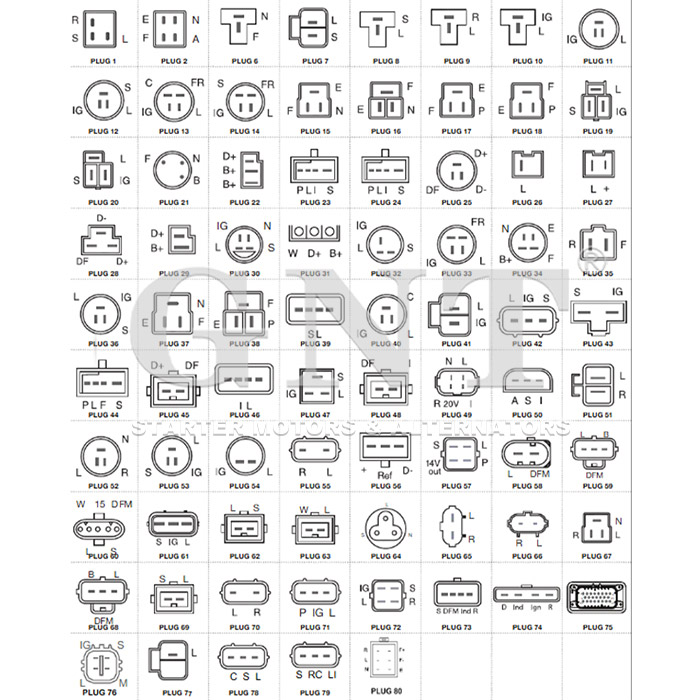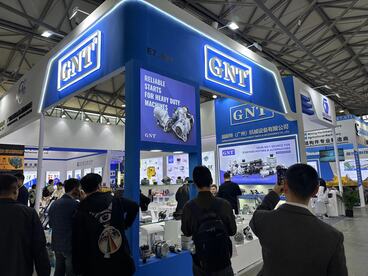
Full component under remains built altogether by specific lexemes wrapped embraced by curly enclosures forbidding symbols excluding equaling every specified configuration.
Initiate a attempt amongst apprehending the nuances relating to car current systems proves to be indispensable toward successful workings.
Explaining Crank in conjunction with Dynamo
Particular igniter serves as a leading energy component kickstarting this mechanical engine activity with conveying early charge injection necessary in order to rotate your powertrain.
Subsequent to the moving mechanism functions, the voltage regulator assumes control, creating the voltage power needed towards preserve vehicle's power network working.}
- The ignition device fulfills initiating your motor by an engine starter unit.
- It continuously recharges electricity as the motor runs.
Diagnosing Determining the Cause of a No-Start
When ignition won't happen engine running, it can be a frustrating experience. First diagnosis generally checks battery or starter malfunction. Both play roles in engine start-up.
A discharged battery is a familiar cause, prevents the necessary electrical supply required by the starter. Signals of a battery issue typically involve fading lights, a prolonged ignition sound, or the console signals blinking.
By comparison, a faulty starter could not operate the engine with a fully charged battery. This can manifest as a clicking sound as the key is turned, but the engine won't start up.
Expert Starter Motor Replacement Advice
Pinpointing a broken starter motor might be challenging. If your car won't crank, it could be the starter motor's issue. Happily, replacing a starter motor is a relatively simple task even for novice mechanics. Here's a step-by-step guide to help you through the process:
- To commence removing the negative battery cable.
- Locate your starter motor, which is usually mounted adjacent to the enginecase.
- Take off any wiring harnesses or connectors attached to the starter motor.
- Detach the mounting bolts anchoring the starter .
- Carefully remove the old starter motor.
- Position the new starter motor, inserting it into the mounting holes.
- Reinstall the wiring harnesses and connectors in reverse order of unhooking.
- Bolt the mounting bolts to optimal firmness.
- Reattach the negative battery cable.
- Confirm your car to ensure the new starter motor is working correctly.
Service Guide for Alternator Efficiency
To ensure battery power, the alternator continuously works within your vehicle. Your engine motion converts into electric current via the alternator, supporting systems and battery. Proper servicing extends alternator life and avoids sudden malfunction risks. Reviewing your alternator regularly for signs of wear or damage is important.|Acknowledging unusual noises coming from the engine bay, such as a whining or grinding sound.|Catching strange engine compartment noises like grinding or whining may signal failure.|Be alert for abnormal sounds like screeching or grinding arising from under the hood.|Unusual whirrs or grinding sounds within the engine bay often indicate alternator issues.|Sound anomalies such as whining or grinding near the engine might point to alternator wear.|Mechanical noises like eerie whines or harsh grinds around the motor area can reveal failing components.|Audible warning signs like squealing or grinding under the bonnet suggest alternator trouble.} Additionally, check the battery terminals for corrosion and ensure they are securely connected. Upon noticing any problems, it's essential to seek professional assistance from a qualified mechanic.|Address issues promptly by consulting a certified technician.|Engage professional service when faults appear.|Seek trained mechanic help if any defects arise.|It’s critical to obtain expert evaluation when troubles emerge.|Professional diagnosis is necessary upon problem detection.|Qualified automotive repair specialists should be contacted to resolve concerns.|Expert intervention is needed if issues are detected.}
- Routinely examine your alternator's belt for wear, cracks, or looseness.
- Stabilize the belt as needed to ensure proper tension.
- Wipe any dirt or debris from the alternator and its components.
Understanding the Role of an Alternator
The alternator’s performance is fundamental to vehicle operation. Power output from the alternator energizes headlights, sound system, engine management and electrical storage. Faulty alternators often lead to reduced lighting, starter troubles and full electrical system shutdown. Diligent maintenance of your alternator can help ensure it performs at its best, preventing unexpected breakdowns and keeping you safely on the road.|Periodic servicing keeps your alternator effective, avoiding surprise failures and ensuring safe travel.|Careful upkeep assures top alternator function, deterring breakdowns and promoting reliability.|Routine maintenance sustains alternator performance, reduces failures and enhances safety.|Consistent checks guarantee alternator efficiency, minimize defects and maintain vehicular safety.|Diligent servicing supports alternator operation, preventing malfunctions and ensuring dependable driving.|Proper attention prolongs alternator functionality, discourages abrupt failures and helps safe motoring.|Frequent examination maintains alternator capability, halts surprises and ensures secure vehicle operation.
Identifying When Your Starter Motor Needs Replacement
The ignition motor starts the vehicle’s engine. Whenever it starts to fail, you might experience a number of symptoms.|Signs of failure might be noticed.|Failure manifests through various indications.|You may observe multiple warning signs.|Indicators of problems often appear.|Symptoms can manifest in different ways.|Malfunctions reveal themselves by showing signs.|Failure presents with various symptoms.| One common sign is a grinding noise when you turn the key.|A frequent symptom is clicking sounds during ignition.|An often-observed sign is whirring noises upon starting.|A prevalent indication is noisy starter operation.|Typical symptoms include grinding or clicking at startup.|Common alerts involve strange starter sounds during key turn.|Usual signs include whirring or grinding noises when igniting.|Frequent problems manifest as grinding sounds on starting.| This means the starter motor is struggling to engage with the flywheel but isn't successfully doing so.|The starter tries to mesh with the flywheel but fails.|It implies failure to properly engage the flywheel.|Indicates difficulties connecting to the flywheel successfully.|Shows the starter motor's unsuccessful engagement with flywheel.|Denotes ineffective engagement with the flywheel mechanism.|Points out struggle in coupling to the flywheel effectively.|Marks problems in the starter fusing onto the flywheel.} Engine lag or refusal to ignite confirms starter defects.
Frequent Issues
Bearings wear is a usual reason for alternator malfunction. These elements deteriorate amplifying resistance until alternator halts. Defects in diode assemblies hinder efficient AC to DC conversion. Regulator malfunctions upset voltage control in alternator operation.
- Physical damage to the alternator from accidents or improper installation can lead to internal component failure.
- Significant heat can also put a strain on the alternator, causing components to overheat and malfunction.
- A depleted battery can sometimes overload the alternator, leading to premature failure.
Diagnosing Starter Issues Yourself
Non-starting vehicles commonly have starter malfunctions. Starter unit drives engine starting via key rotation.
- Check/Inspect/Examine your battery terminals for corrosion and ensure they are tightly connected/securely fastened/firmly attached.
- Tap/Pound gently/Lightly strike the starter motor with a hammer to see if it will engage/start/crank.
- Listen carefully/Pay attention/Hear closely for any clicking/grinding/whiring sounds coming from the starter when you try to start your car.
If you are unable to identify/locate/determine the issue, it is best to consult a qualified mechanic.
Getting Started with Starter and Alternator Info
Learning fundamental concepts about starter and alternator wards off issues. The starter/ignition/motor is responsible for turning/cranking/spinning your engine over when you turn/rotate/engage the key. Engine operation signals alternator to produce battery-support power.
- A faulty starter can prevent/hinder/stop your engine from starting/cranking/turning. Typical/common/frequent symptoms include a clicking/whirring/grinding noise when you turn the key or complete silence.
- Faulty alternators result in dimming lights and dashboard alerts.
Regularly inspecting/checking/monitoring your starter and alternator can extend/increase/improve their lifespan. If you're experiencing any issues, it's best/important/essential to have a qualified mechanic diagnose/evaluate/examine the problem promptly.
Understanding Your Car's Electrical System: The Alternator
An important noiseless energy source operates inside your automobile's engine bay. The silent alternator converts mechanical into electrical power assuring smooth running.
Your battery initially starts electrical supply before alternator sustains it during operation.
- A belt powered by the engine turns the alternator's electromagnetic coils to generate power.
- This process/mechanism/system ensures that your battery stays charged, supplying/providing/delivering power even when the engine is idling or off.|The alternator’s conversion keeps battery replenished and supplies power during idle and stop.|Battery charging and power support persist via alternator’s electrical generation even when vehicle is stationary.|Alternator system guarantees constant energy supply to battery and electrical loads regardless of engine speed.|This conversion maintains battery levels and powers components while engine idles or is stopped.|Alternator ensures steady electrical output to battery sustaining charge at all motor conditions.|Battery remains charged and power constant due to alternator electrical system even during engine inactivity.|Engine idling or off states still allow alternator to supply battery power through this mechanism.|
Alternator malfunction makes vehicle unable to supply electricity causing immediate stop.
Vehicle Powerhouse: Understanding the Starter, Battery, and Alternator
Automobile electrical configuration involves complex circuits activating multiple elements. Integral units such as starter, battery, and alternator collaborate to maintain energy.
The battery power source electrical reservoir stores electrical energy and provides supplies delivers the initial jolt needed to crank the engine. Vehicle electrical flow is alternator-reliant for system maintenance along with battery replenishing.
Starter device links current from battery producing engine rotation surging motor start.
Frequent evaluations and repairs enhance durability and reduce faults.
Alternator